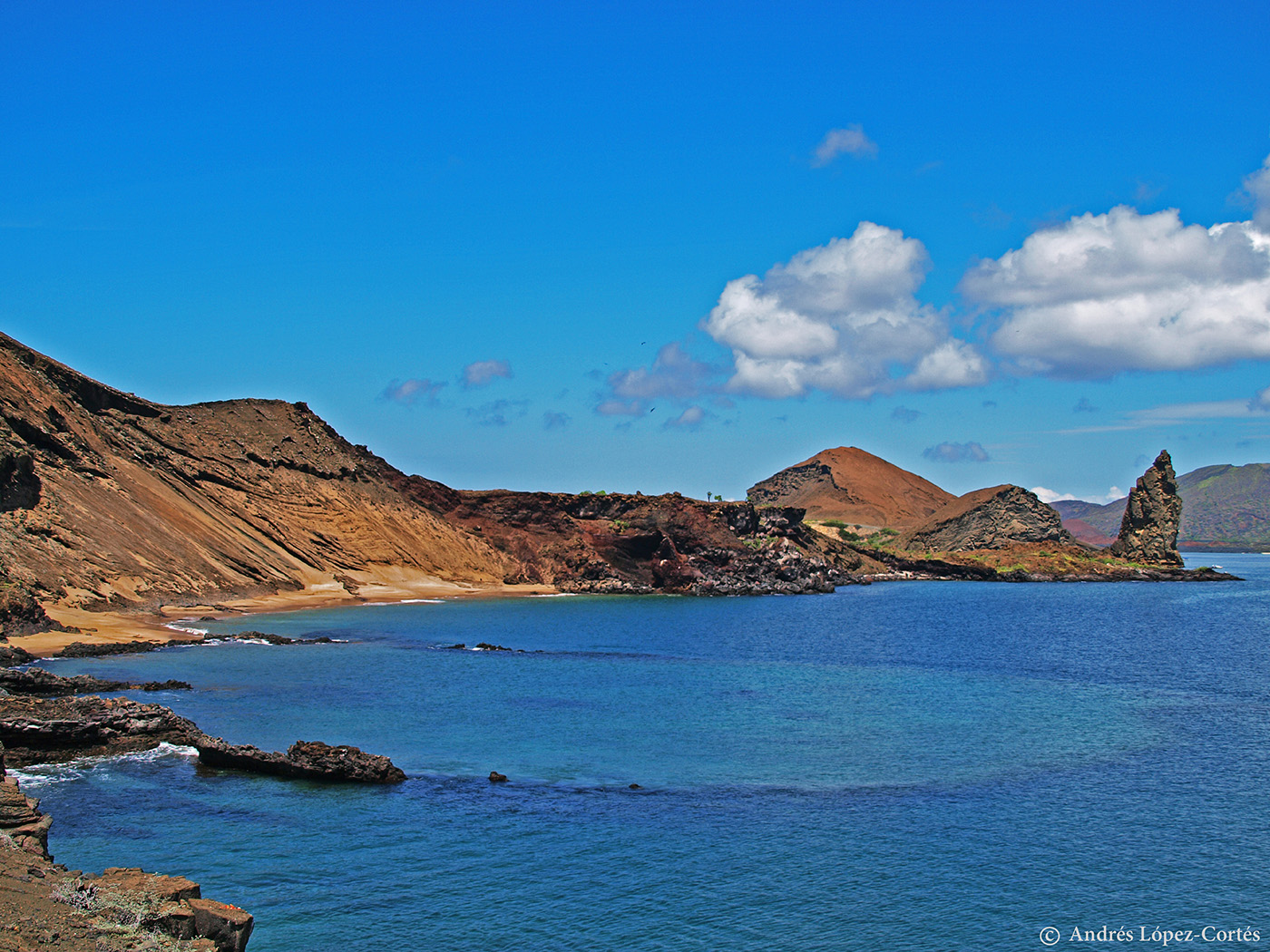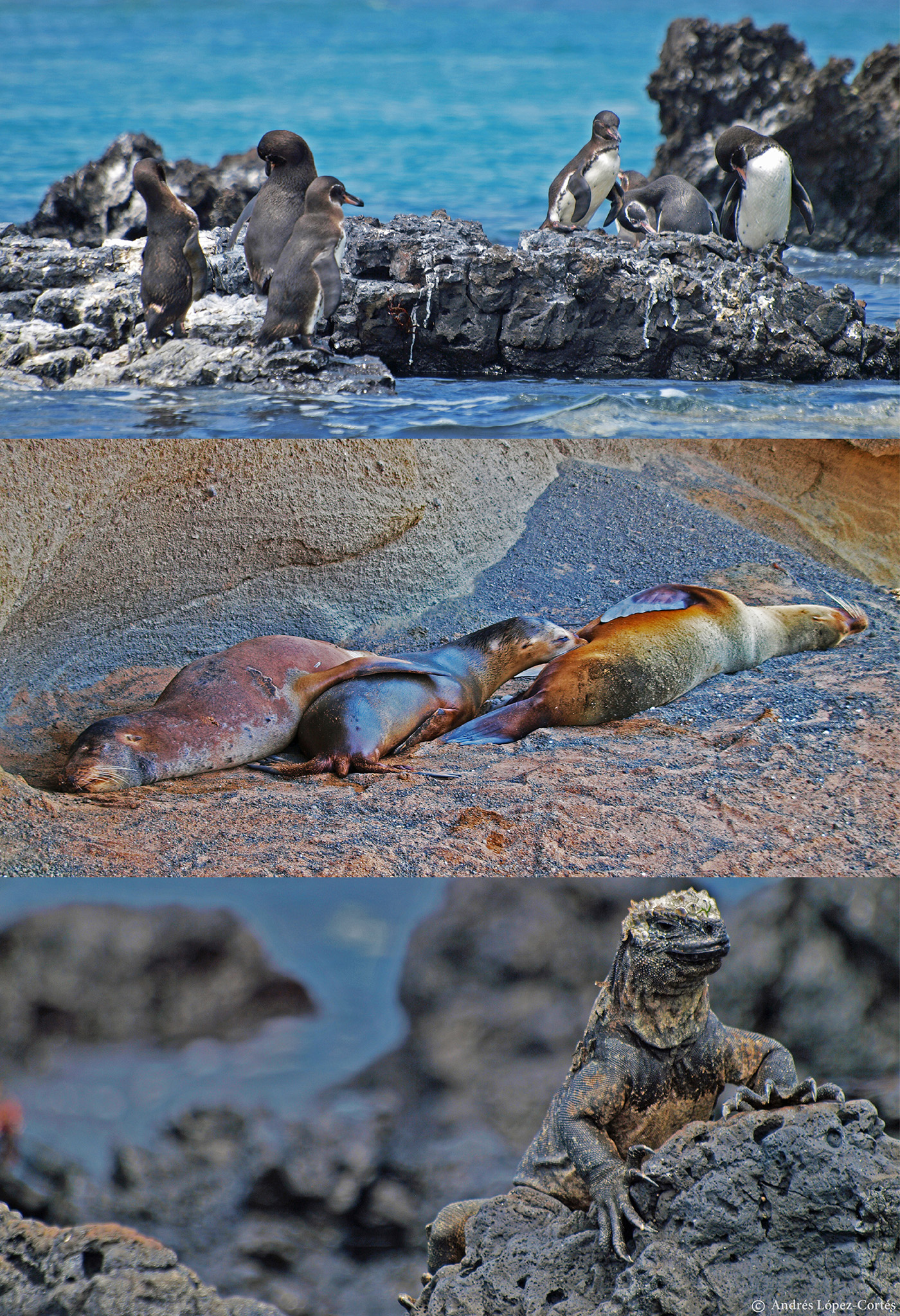The Galapagos Islands
The Galapagos Islands, officially known as “Archipiélago de Colón”, is a set of 18 main volcanic islands and 43 small volcanic islets located in the eastern Pacific Ocean, 973 kilometers off the coast of continental Ecuador. The archipelago is comprised of submarine volcanoes created by the subduction of the Nazca tectonic plate below the South American continent. The main islands are Baltra, Bartolomé, Darwin, Española, Fernandina, Floreana, Genovesa, Isabela, Marchena, North Seymour, Pinzón, Pinta, Rábida, San Cristobal, Santa Cruz, Santa Fe, Santiago, and Wolf.

Volcanic islands.
The makeup of the Galapagos climate is a function of its position on the equator, the marine currents that pass through the area, and the winds that help in creating those currents. Therefore, the Galapagos has two seasons, the cool or “garua” season and the hot or rainy season. Regarding ocean currents, the marine reserve is influenced by cold ocean currents such as the Peruvian (Humboldt) coastal current and the Equatorial (Cromwell) current, and warm marine currents such as the Equatorial countercurrent and the global weather phenomenon known as “El Niño Southern Oscillation” which occurs every 3 to 7 years and is characterized by warm sea surface temperatures and a depletion of nutrients in the water.

Bartolomé Island.
The conformation of volcanic islands, weather, and ocean currents has allowed these enchanted islands to become a hotspot for birds, terrestrial animals, and marine animals. With this treasure trove of endemic species, the Galapagos Islands are renowned for their natural wonders and biodiversity. Darwin’s studies of the archipelago's plants and animals during the voyage of the H.M.S. Beagle played a pivotal role in the development of his theory of natural selection and evolution.

Endemic animals: Darwin’s finch, marine iguana, Galapagos hawk, and Galapagos tortoise.
Among the most representative endemic animals are the marine iguana, the flightless cormorant, the Galapagos finch, the Galapagos penguin, the Galapagos fur seal, the blue-footed booby, the Galapagos hawk, the lava lizard, the frigate bird, the large painted locust, the waved albatross, the Galapagos mockingbird, the sally lightfoot crab, and the Galapagos tortoise. The most famous giant turtle, called Lonesome George (Chelonoidis abingdoni), died in June 2012 from heart failure. He was estimated to be 102 years old. Lonesome George will be displayed at the Charles Darwin Research Station on Santa Cruz Island.

Endemic animals: Galapagos penguins, sea lions, and marine iguana.
Due to its natural wonder and unique wildlife, the Galapagos Islands were declared a National Park in 1959, a World Heritage site by UNESCO in 1978, and a UNESCO Biosphere Reserve in 1984. Additionally, Galapagos waters became a Marine Reserve in 1986, a Whale Sanctuary in 1991, and the marine reserve was declared a World Heritage site by UNESCO in 2001.
Andrés López-Cortés is a molecular biologist and researcher at the Biodmedical Research Institute at the Universidad de las Américas in Quito, Ecuador. Follow him on Twitter here.